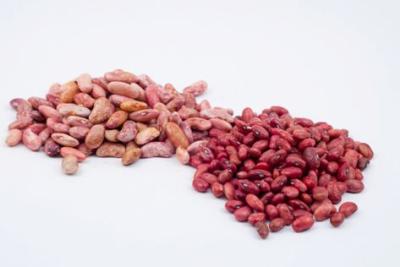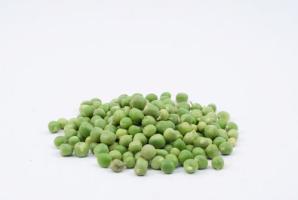Introduction
What is beriberi?
Beriberi is a disease caused by a lack of Vitamin B1 (thiamin).The thiamin-deficiency disorder is characterized by muscle weakness, loss of appetite, nerve degeneration and sometimes oedema. It can affect:
- Breast-fed infants, when the mother has an inadequate intake of thiamin or if the infant is fed with formulas not fortified with thiamin.
- People whose diet includes certain types of fish that produce an enzyme that inactivates thiamin
- People who inherit beriberi (genetically predisposed). Thesee people lose the ability to absorb thiamine from foods. This can happen slowly over time and symptoms occur when the person is an adult. However, because doctors may not consider beriberi in non-alcoholics, this diagnosis is often missed
- People who drink (Alcoholics): Alcohol-related thiamin deficiency is caused by inadequate intakes of thiamin as well as impaired absorption and storage. Alcoholics have a triple problem related to thiamin. Alcohol diminishes thiamin absorption, alcohol increases thiamin excretion and alcoholics consume such a poor quality diet that there may be few if any, vitamins in the foods and beverages consumed.
- People with kidney diseases: getting dialysis and taking high doses of diuretics raise the risk of beriberi.
There are two distinct types of beriberi:
- Wet: In addition to peripheral neuropathy (damaged nerves), swelling (oedema) occurs along with an enlarged heart and congestive heart failure.
- Dry : There is also preripheral neuropathy and extreme muscle wasting.
In infants, the disease presents as cardiac failure, which may occur very suddenly.
Symptoms of Beriberi
Early symptoms are:
- Irritability
- Fatigue
- Restlessness
- Decreased appetite
- Vague abdominal discomfort
Later symptoms are:
- Change in walking style
- Numbness/loss of feeling or tingling or burning and even pain in the limbs
- Shortness of breath
- Blush coloration to the skin (seen on hands, feet, lips)
- Swelling of feet
- Memory loss
- Confusion
- Speech difficulty
- Unusual behavior
- Abnormal eye movement and droopy eyelids
- Seizures
- Loss of consciousness
- Coma
- Death (due to heart failure)
Good news!
With treatment, both early heart damage and early nervous system damage is reversible and is not permanent. However, advanced heart disease is often fatal. A few symptoms such as memory loss may persist despite treatment. Without treatment, beriberi kills.
Prevention and treatment
Treatment involves thiamin supplementation and eating a thiamin-rich diet. This is especially important in breastfeeding and pregnant women.
How much thiamin do you need?
Recommended Dietary Allowance (RDA) for Thiamin
| Life Stage | Age | Males (mg/day) | Females (mg/day) | |
| Infants | 0-6 months | 0.2 | 0.2 | |
| Infants | 7-12 months | 0.3 | 0.3 | |
| Children | 1-3 years | 0.5 | 0.5 | |
| Children | 4-8 years | 0.6 | 0.6 | |
| Children | 9-13 years | 0.9 | 0.9 | |
| Adolescents | 14-18 years | 1.2 | 1.0 | |
| Adults | 19 years and older | 1.2 | 1.1 | |
| Pregnancy | all ages | - | 1.4 | |
| Breastfeeding | all ages | - | 1.4 |
 |
| Beans |
|
© Biovision
|
 |
| Peas |
|
© Biovision
|
 |
| Nuts |
|
© Biovision
|
 |
| Whole wheat meal |
|
© Biovision
|
Thiamin-rich foods
Thiamin is found in a wide variety of foods,although generally in small amount. Major individual contributors of thiamin to our diets are bread and rolls, pork, ready to use cereals and orange juice.Foods with very high nutrient density of thiamin are pork products, sunflower seeds,legumes, wheat germ and water melon. Whole grains, and enriched grains, green beans, asparagus, organ meats (such as liver, kidney) peanuts and other seeds and mushrooms also are good sources. Overall, enriched, fortified, and whole-grain products make the greatest contribution of thiamin to the diet.
Thiamin occurs widely in food but may be lost in the course of processing, particularly in the milling of grains. Whole grain is therefore essential in disease prevention.
|
Food |
Serving |
Riboflavin (mg) |
|
Lentils (cooked) |
1/2 cup |
0.17 |
|
Peas (cooked) |
1/2 cup |
0.21 |
|
Long grain brown rice (cooked) |
1 cup |
0.19 |
|
Long grain white rice, enriched (cooked) |
1 cup |
0.26 |
|
Long grain white rice, unenriched (cooked) |
1 cup |
0.04 |
|
Whole wheat bread |
1 slice |
0.10 |
|
White bread, enriched |
1 slice |
0.11 |
|
Fortified breakfast cereal |
1 cup |
0.5 - 2.0 |
|
Wheat germ breakfast cereal |
1 cup |
4.47 |
|
Pork, lean (cooked) |
3 ounces* |
0.72 |
|
Brazil nuts |
1 ounce |
0.18 |
|
Pecans |
1 ounce |
0.19 |
|
Spinach (cooked) |
1/2 cup |
0.09 |
|
Orange |
1 fruit |
0.10 |
|
Cantaloupe |
1/2 fruit |
0.11 |
|
Milk |
1 cup |
0.10 |
|
Egg (cooked) |
1 large |
0.03 |
*3 ounces of meat is a serving about the size of a deck of cards
Many foods especially meat (except pork), milk and milk products, most fruits-contain very little thiamin. Some fish, and shellfish contain an enzyme called thiaminase, which destroys thiamin. Fortunately cooking destroys the thiaminase. Eating a variety of foods is the most reliable way to obtain sufficient thiamin from a diet.
Review Process
1) Dr Caroline Mukuhi Nganga MBCHB NOV 2009
2) Review by Dr Alice Ojwang-Ndong January 2012
Information Source Links
- Brust, J.C.M. (2007). Nutrition- and Alcohol-Related Neurologic Disorders. In: Goldman, L. and Ausiello, D. (eds.) Cecil Medicine. 23rd ed. Philadelphia, Pa: Saunders Elsevier:chap 443.
- Chenoweth, W.L. (2007). Vitamin B Complex Deficiency and Excess. In: Kliegman RM, Behrman RE, Jenson HB, Stanton BF, eds. Nelson Textbook of Pediatrics. 18th ed. Philadelphia Pa: Saunders Elsevier: chap 46.
- Kane, A.B. and Kumar, V. (2005). Nutritional Deficiencies. In: Kumar V, Abbas AK, Fausto N, eds. Robbins and Coltran: Pathologic Basis of Disease. 7th ed. Philadelphia, Pa: Saunders Elsevier: chap 9.
